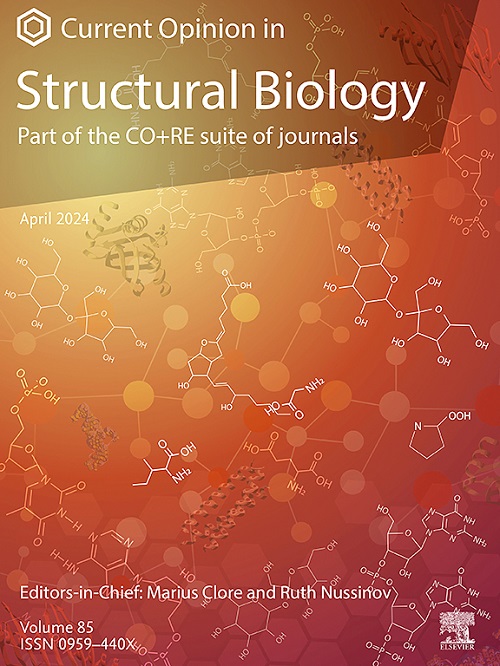Probing molecular and biophysical mechanisms of RNA and protein phase transitions with simulations and theory
IF 6.1
2区 生物学
Q1 BIOCHEMISTRY & MOLECULAR BIOLOGY
引用次数: 0
Abstract
Biomolecular condensates play crucial roles in cellular organisation, regulating diverse biological functions as well as contributing to disease pathologies when phase separation is dysregulated. Computer simulations and theoretical approaches have emerged as powerful tools to probe the molecular mechanisms governing phase transitions in these systems. This review highlights recent advancements in computational methods, focusing on coarse-grained and all-atom molecular dynamics simulations, to elucidate the driving forces underlying protein and RNA condensate formation and how their stability and material properties can be regulated and tuned. Additionally, we address new strategies for designing synthetic condensates with tunable properties and leveraging predictive models to guide experimental studies. The integration of molecular simulations, with data-driven approaches and theory, has expanded our understanding of biomolecular condensates, offering novel insights into both fundamental biology and physics, as well as potential practical applications.
用模拟和理论探索RNA和蛋白质相变的分子和生物物理机制
当相分离失调时,生物分子凝聚物在细胞组织中起着至关重要的作用,调节多种生物功能以及促进疾病病理。计算机模拟和理论方法已经成为探测这些系统中控制相变的分子机制的有力工具。这篇综述强调了计算方法的最新进展,重点是粗粒度和全原子分子动力学模拟,以阐明蛋白质和RNA凝聚物形成的驱动力,以及它们的稳定性和材料性质如何被调节和调整。此外,我们提出了设计具有可调性质的合成凝析油的新策略,并利用预测模型来指导实验研究。分子模拟与数据驱动的方法和理论的结合,扩大了我们对生物分子凝聚物的理解,为基础生物学和物理学以及潜在的实际应用提供了新的见解。
本文章由计算机程序翻译,如有差异,请以英文原文为准。
求助全文
约1分钟内获得全文
求助全文
来源期刊

Current opinion in structural biology
生物-生化与分子生物学
CiteScore
12.20
自引率
2.90%
发文量
179
审稿时长
6-12 weeks
期刊介绍:
Current Opinion in Structural Biology (COSB) aims to stimulate scientifically grounded, interdisciplinary, multi-scale debate and exchange of ideas. It contains polished, concise and timely reviews and opinions, with particular emphasis on those articles published in the past two years. In addition to describing recent trends, the authors are encouraged to give their subjective opinion of the topics discussed.
In COSB, we help the reader by providing in a systematic manner:
1. The views of experts on current advances in their field in a clear and readable form.
2. Evaluations of the most interesting papers, annotated by experts, from the great wealth of original publications.
[...]
The subject of Structural Biology is divided into twelve themed sections, each of which is reviewed once a year. Each issue contains two sections, and the amount of space devoted to each section is related to its importance.
-Folding and Binding-
Nucleic acids and their protein complexes-
Macromolecular Machines-
Theory and Simulation-
Sequences and Topology-
New constructs and expression of proteins-
Membranes-
Engineering and Design-
Carbohydrate-protein interactions and glycosylation-
Biophysical and molecular biological methods-
Multi-protein assemblies in signalling-
Catalysis and Regulation
 求助内容:
求助内容: 应助结果提醒方式:
应助结果提醒方式:


